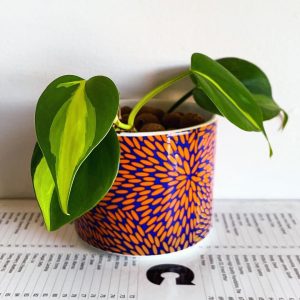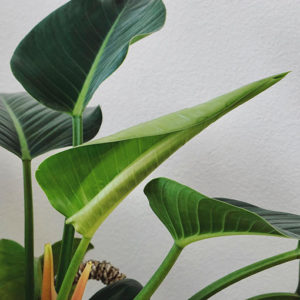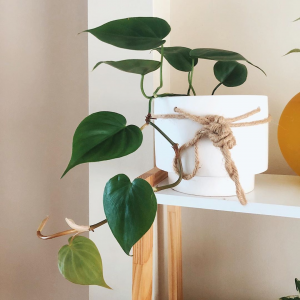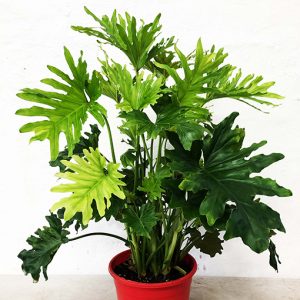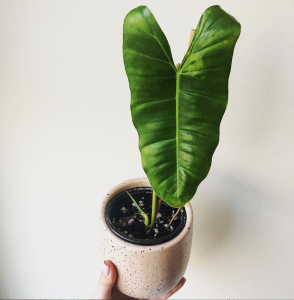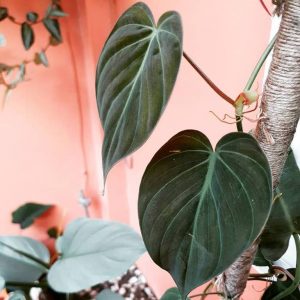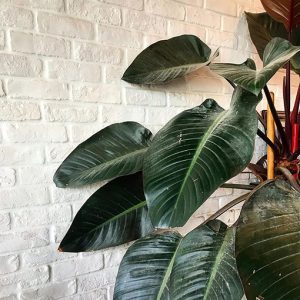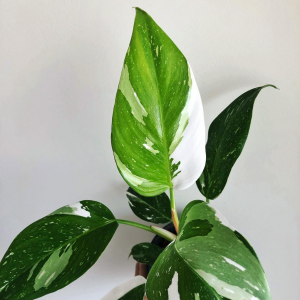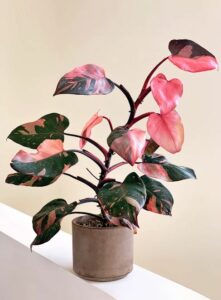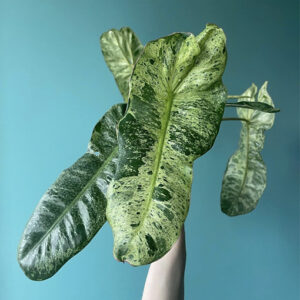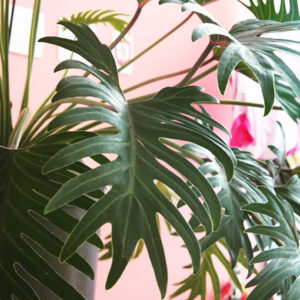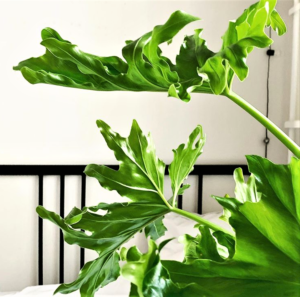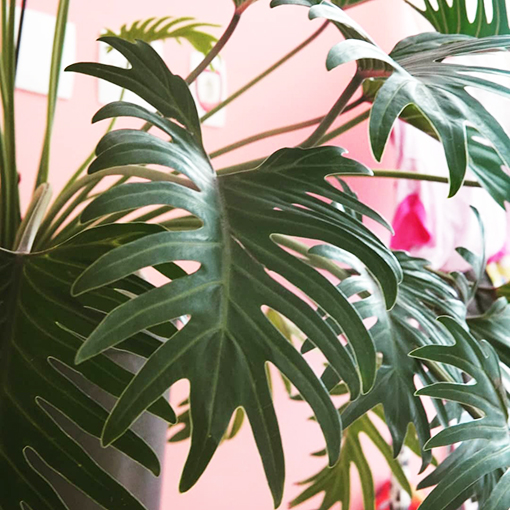
The underrated Philodendron Xanadu! The symmetry of the deeply lobed foliage is quite interesting, despite being a philodendron needing more light than others of its kind! This babe is a real eye-catching indoor plant!
📷: @marina_boscato
Philodendron Xanadu – Thaumatophyllum Xanadu – Introduction
A member of the Arum family, Araceae Thaumatophyllum Xanadu is a native of tropical habitats of Brazil. Earlier known by the name Philodendron Xanadu, which it is still most commonly referred to as, the plant is prized for it’s deeply split bright, green leaves creating a tropical atmosphere for your household. It is also much cherished for being a hardy, low maintenance indoor plant that can tolerate fairly low-light conditions but can also be grown quite easily outdoors. Its low maintenance nature has also made it a popular choice for large scale projects such as council nature strips and in parks. The long-petioled foliage of the Xanadu appear clumping on the stem that lengthens with age. The underground stem, rhizome grows horizontally bearing numerous tender roots. The non-showy flowers are borne on a sapdix and enclosed by a maroon-red floral spathe. Indoors Xanadu, will very rarely flower. Mature Thaumatophyllum Xanadu produces aerial roots closer to the soil that mostly act as an extra support for the plant by attaching to soil.
Philodendron Xanadu – Thaumatophyllum Xanadu – Planting
Appreciated as a foliage plant, the drooping foliages in shades of green add vibrancy to your living space. Philodendron Xanadu is a perfect ornamental for the entrances, sidewalks, by a poolside, etc. Potted in large ceramic containers, Xanadu can fill a space with serenity. In outdoors the mass planting of Philodendron Xanadu makes excellent informal hedges and low fences in between garden spaces. Spacing of 3 feet (90cm) between each Philodendron Xanadu brings more space for the foliages to spread and have good air circulation.
Philodendron Xanadu – Thaumatophyllum Xanadu – Lighting and Position
Thaumatophyllum Xanadu shows preference for low light conditions. The fast growing, Xanadu performs its best under indirect or dappled sunlight. The soft, lush leaves of Xanadu are prone to scorching if grown under direct hot midday sunlight and are a perfect accompanying plant beneath trees that provide a canopy above. The low light requirements of Thaumatophyllum Xanadu make it a perfect indoor variety. But too much darkness can take a toll on your Xanadu, as they get stunted growth with new foliage emerging at a slow rate. Sensitive to fluctuating temperatures, it’s best to keep your Thaumatophyllum Xanadu away from air-conditioners.
Philodendron Xanadu – Thaumatophyllum Xanadu – Soil and Fertilisation
The moderately drought tolerant Philodendron Xanadu, needs a well-draining organic rich soil to best prosper. Moist sand, loam or clay mixed with some organic matter like peat moss or perlite will be an ideal mix for Xanadu. Keep up a good aeration in the soil for the Thaumatophyllum Xanadu roots to penetrate well. Occasional mulching with peat, compost or coconut coir will do the job.
Feed the Philodendron Xanadu with diluted, balanced fertiliser or a slow releasing one during the growing season. Avoid feeding during Autumn and cold Winter months. Limit fertilisation to a minimum as excessive feeding can burn the roots.
Philodendron Xanadu – Thaumatophyllum Xanadu – Watering
Xanadu likes to have a moist soil all the time but it should not be allowed to stand in water-logged or dry soils. Water more during the growing season and hotter months. When the top inch of the top soil dries out completely then it’s time to shower your Xanadu. It’s best to have a tray filled with water at the base of the Philodendron Xanadu’s pot to maintain the humidity in the atmosphere.
Philodendron Xanadu – Thaumatophyllum Xanadu – Pruning and Maintenance
The crowding habit of Thaumatophyllum Xanadu needs minimal pruning to maintain their nice shape. Trim away those old yellow and decaying leaves to keep the plant tidy and disease free. Remove the overcrowding leaves to give some room for your fast-growing Philodendron Xanadu. Wiping the leaf surface of your indoor Xanadu with wet tissue keeps the foliage clean. Also mist the plant regularly to maintain the moisture around the leaves.
Philodzndron Xanadu – Thaumatophyllum Xanadu – Propagation
Once your Philodendron Xanadu becomes too big for its pot, its time to think about repotting and propagation. Propagation of Xanadu is easily performed through underground stem cuttings, that bears a section of roots and at least one or two leaves. Thus during repotting is the best time to propagate your Thaumatophyllum Xanadu when you’ll have easy access to the roots. Remove the plant from the soil and using a sharp pruning knife cut the rhizome into convenient pieces with growing foliage and a few roots attached below. Plant them in a well-draining potting mix and provide with regular watering and bright indirect sunlight.
Philodendron Xanadu – Thaumatophyllum Xanadu’s – Common Pests and Diseases
Pests like aphids, spider mites and mealy bugs can be common pests attacking the Philodendron Xanadu. These insects suck out the plants sap, leaving behind yellow coloured or wilted leaves. Treat them effectively with regular insecticidal soap solution or neem oil mixtures.
Leaf spot and root rot are the major disease associated with Xanadu. Both are the result of fungal attacks, that breed in excess moisture. Trim away overlapping foliage to provide fresh air for Xanadu leaves. Never let the Thaumatophyllum Xanadu roots sit in water-logged soils which will help to avoid any circumstance for the infestation of root rotting Phytophthora fungus.
Philodendron Xanadu – Thaumatophyllum Xanadu’s Toxicity
Like all Philodendrons the Xanadu is also toxic when consumed.
Philodendron Xanadu – Thaumatophyllum Xanadu’s – Design Tips
The Philodendron Xanadu with its 360 degree growth habit and relatively low profile makes it a popular candidate for plant stands. A plant stand gives it some added height, allows the foliage to overflow the pots edges and helps to show off its all directions form. The vibrant green works well with white pots and white walls and light pink is another great option. Outdoors they can be used in rows such as along driveways and paths to create a neat formal impression or informally to achieve a jungle impression, ideal especially in cooler climates where some tropical plants might not be as successful.

